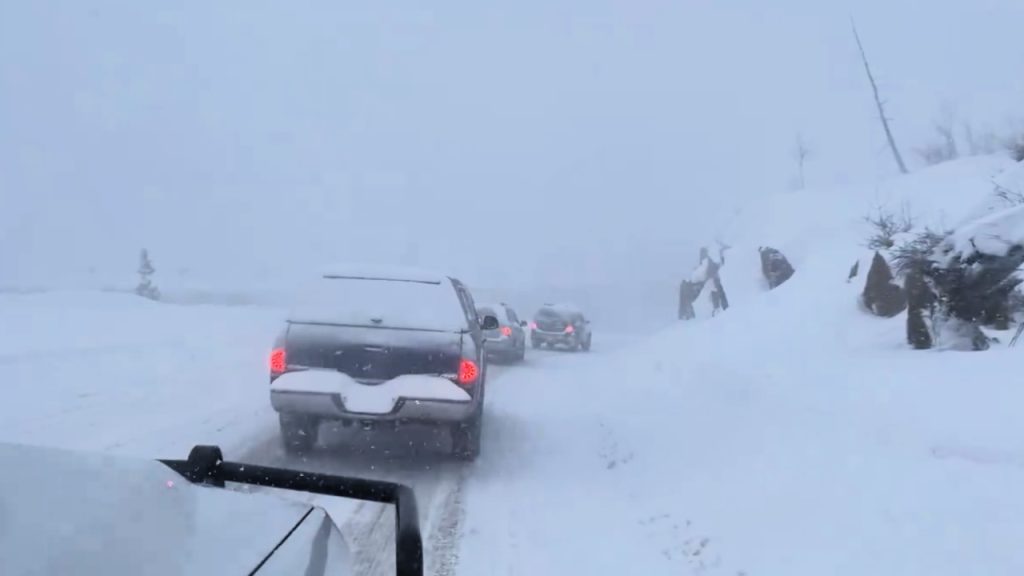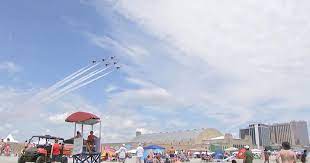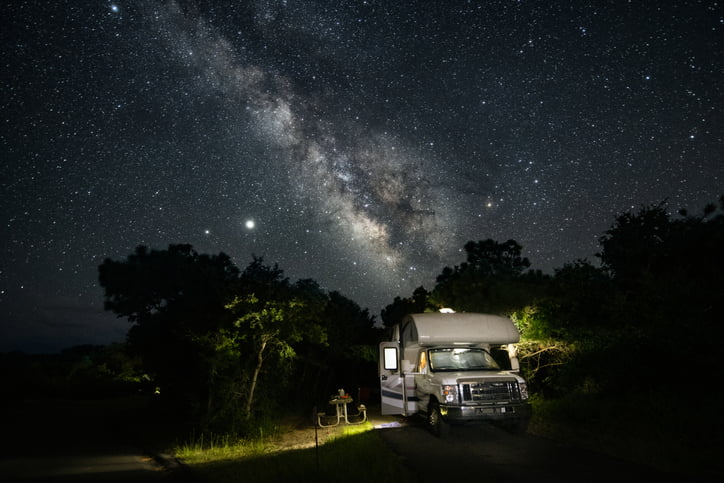The weather in Utah’s mountains is about to turn quite nasty, and it’s not going to let up anytime soon. A Winter Weather Advisory has been issued as heavy snow, slick roads, and strong winds are expected to hit tonight and continue through Tuesday, April 2. If you have plans to head into the mountains, you’ll need to prepare for some serious weather that could make travel tricky at best — and downright dangerous at worst.
What’s Coming:
It looks like winter isn’t quite ready to let go. Snow is expected to start falling later this evening, and it’s going to ramp up overnight. The Wasatch and Uinta Mountains are going to take the brunt of this storm, with some areas potentially seeing as much as 6 inches of snow or more. Along with the snow, expect strong winds gusting up to 40 MPH, making things even more difficult. This is a storm that’ll impact visibility, driving conditions, and just about everything else in the mountains — so if you’re planning to travel, be ready for a tough go.
Why This Storm Is Dangerous:
-
Slippery, Snowy Roads: Anyone who’s ever driven through Utah’s mountains knows that it’s already a tricky proposition, even in the best of conditions. Throw snow and ice into the mix, and you’ve got a recipe for disaster. Roads like Interstate 80 and Interstate 15, which wind through the higher elevations, will become slick with snow, and conditions could worsen quickly. Black ice could form unexpectedly, making it almost impossible to stop or steer safely. Even if you’re a seasoned mountain driver, this storm will test your skills.
-
Blowing Snow and Whiteout Conditions: The storm won’t just bring snow — it’ll also bring blowing snow. Wind gusts could reach 40 MPH, which will send snow drifting across the roads and significantly reduce visibility. You could find yourself in a whiteout situation before you even realize it. If that happens, it’s best to pull over in a safe spot and wait for things to clear up. If you’re driving, it’ll be harder to see the road, other vehicles, and even signs. In these conditions, you have to be extra careful.
-
Potential Road Closures and Travel Delays: The storm is expected to cause significant travel disruptions, particularly in the mountain passes. Snow will accumulate quickly, and road conditions could deteriorate fast, making it impossible to keep roads clear. This means possible road closures and major delays, especially during the heaviest snowfalls. If you’re planning to drive through the mountains, be prepared for longer travel times, unexpected detours, and possibly even a complete stop. Make sure to check road conditions before you head out, and keep an eye on local weather updates for real-time alerts.
How to Stay Safe:
-
Avoid Mountain Travel If Possible: Honestly, the best piece of advice right now is to stay off the mountain roads if you don’t absolutely need to be out there. The storm is expected to last into Tuesday, and conditions are only going to get worse as time goes on. If you can delay or reschedule your trip, it might be best to do so. Better safe than sorry.
-
Be Prepared if You Must Travel: If you absolutely have to head up into the mountains, make sure your car is ready for winter driving. That means having snow tires (or chains) if you need them, a full gas tank, and your emergency kit fully stocked. This should include things like blankets, non-perishable snacks, bottled water, a flashlight, and a first-aid kit. Even if you don’t anticipate getting stuck, it’s always better to be over-prepared than caught off guard. And don’t forget your phone charger and extra batteries — you don’t want to find yourself without power in a storm.
-
Check Weather and Road Conditions Frequently: It’s so important to stay informed. Conditions can change rapidly, and there’s always the chance that closures or road closures will happen unexpectedly. Make sure to check weather updates and road conditions from reliable sources before you leave. The Utah Department of Transportation website and social media accounts provide real-time updates, so you can stay in the know. You can also get updates from local news stations, or apps that track road conditions.
-
Drive Slowly and Stay Alert: If you do find yourself on the road, take it slow. There’s no need to rush, especially when visibility is low and roads are icy. Keep plenty of distance between you and the car ahead of you, and don’t make any sudden movements. Snow and ice can make it harder to stop or turn quickly, so slow and steady is the best approach. And remember, turn on your headlights, even during the day. That will help you see better, and help others see you.
-
Whiteout? Pull Over and Wait: If you get caught in a whiteout or extreme visibility conditions, the best thing you can do is pull over and wait it out. Find a safe place to stop—ideally a parking lot, rest area, or somewhere off the shoulder—and put on your hazard lights so other drivers can see you. Don’t stop on the side of the highway unless absolutely necessary. If you can, stay in the car and keep warm until conditions improve.
This storm is no joke. Winter is making its final stand in Utah’s mountain regions, and if you’re in or near the higher elevations, you’ll want to pay attention. The snow, ice, and strong winds are going to create dangerous conditions, and it’s better to err on the side of caution than to risk getting caught in a storm you didn’t anticipate.



